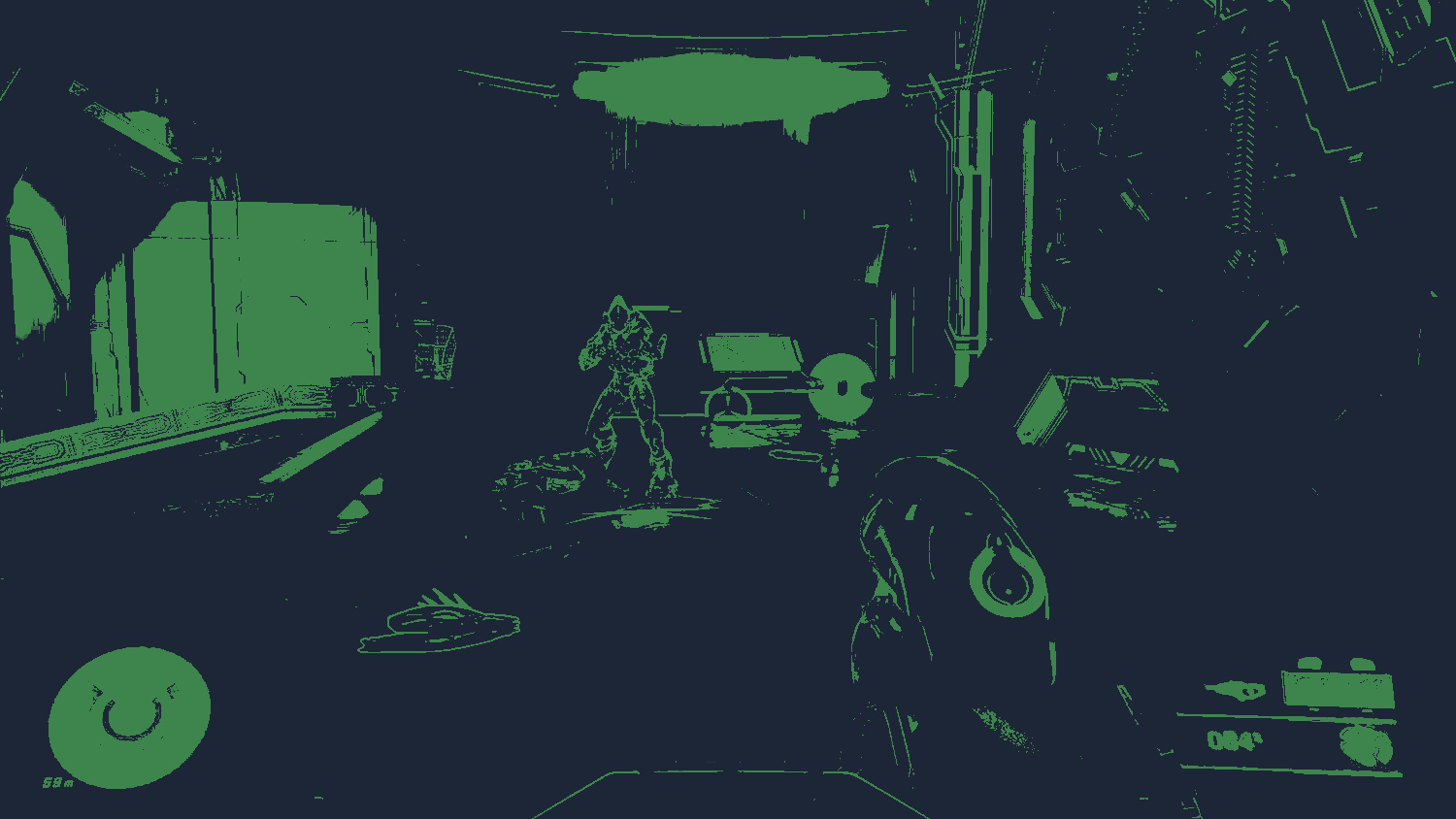
It's difficult to explain, in simple, elegant terms, who and what Halo Infinite's deuteragonist, the Weapon, is. The game itself does a rough job of doing so, eliding many of the finer details of its internal narrative logic to explain that the Weapon is, essentially, a copy of Cortana, another "Cortana model" AI created to trap the original and prepare her for deletion.
But it's more complicated than that. Not that the game tells you, exactly; Halo Infinite, like all of 343 Industries' Halo games, relies on subtext drawn from an extensive and wildly uneven expanded universe, pulling hints of information from this source and that to create gestures and moments that are evocative for the hardcore, but relatively empty for the uninitiated. The Weapon's entire existence is one of these gestures.
What the game reveals, in audio logs and cutscenes, is this: the Weapon is a version of Cortana with no history and no memory, and little knowledge of the world around her. But how does one create another Cortana? As revealed in The Fall of Reach, the very first Halo novel, "smart," sentient AIs are made from human donors. In order to create a complex digital consciousness, a deep tissue scan of a brain is needed, preferably one taken shortly after death. The process destroys the organ. Thus, certain people choose to donate their brains to science after their death and smart AI are created out of them. AI are amnesiac ghosts in Halo, shades reborn and given godlike power.
This process holds true for all AI except Cortana, who was made from a clone of a living brain. Dr. Halsey's brain, to be exact. Halsey, who also founded the Spartan program that created Master Chief and took on the abducted super soldier as a sort of proxy son, cloned her own brain and scanned it to create Cortana's AI core. This process is illegal, considered a high crime in-universe—as it requires essentially cloning and killing a new consciousness, it's an extremely taboo form of murder. In the novel Shadows of Reach, set between Halo 5 and Infinite, Halsey sends the Master Chief to the ruins of the planet Reach to dig out classified materials from Halsey's old, now-buried lab. These are heavily implied to be cryogenically frozen clones of Halsey's brain, backups of the same process used to create Cortana.
Thus the Weapon. She's a reproduced copy of a copy of a clone of the Master Chief's mad scientist surrogate mom, created via a series of crimes against humanity for the sole and exclusive purpose of killing another version of herself. For an all-in Halo fan (which includes, regrettably, the author of this article), all of this was immediately obvious upon the Weapon's introduction. This plot reveal is self-evident, to those who know the logic of the series; it's the story lore YouTubers would write. And knowing this going in significantly changes the experience of Halo Infinite's campaign.
I've noticed it, watching friends play Halo Infinite: their experience of the campaign suffers significantly if they don't have this information. It plays as an exercise in schtick and nostalgia, the first Halo done over again, with a new, fresh-faced AI girlfriend and another trusty pilot to ferry you from objective to objective. It's flat, empty.
The experience doesn't have to be so dull, and the fact that it plays that way so easily is a failure of exposition. With the full context of the Weapon's existence, and the melancholy horror of it, fresh in your mind, Halo Infinite is instead … unsettling. It's a story of identity crisis writ against yet another ultimately meaningless galactic crisis, the story of two machines of different types manufactured by the same masters struggling to decide what, if anything, their lives mean together or separately. It's not just dramatic irony; it's the overlapping resonance of tragedies that extend into every moment of the history shared by these characters, Master Chief and his new companion, a ghost of the first.
Is the Weapon her own person? For that matter, is the Master Chief? She reminds him, at every moment, of someone who he lost but also who she is; his unease and lack of trust constantly reminds her of something about herself she can't quite place. It's all innuendo and fear, a morass of uncertainty that clouds the entire playthrough.
Late in the game, the Weapon, upon learning her true identity, asks the obvious question: "How can you even trust me?"
The Master Chief, in turn, gives the obvious answer: "I don't. But I want to."
It's an unprecedented moment of vulnerability for our stoic murderbot of a hero. It's also, perhaps, the wrong conversation to have. Not, How do you trust me? But, Do you even know who I am?
To be fair, the answer might be the same—for the Master Chief, and for the player.
***
Julie Muncy is a writer and poet based in Austin, TX. She’s formerly a contributor to WIRED.com, and has had her work published at Vice, Rolling Stone, The AV Club, and anywhere else she can convince people to post it. You can contact her on Twitter, where she tweets regularly about videogames, the Mountain Goats, and sandwiches.